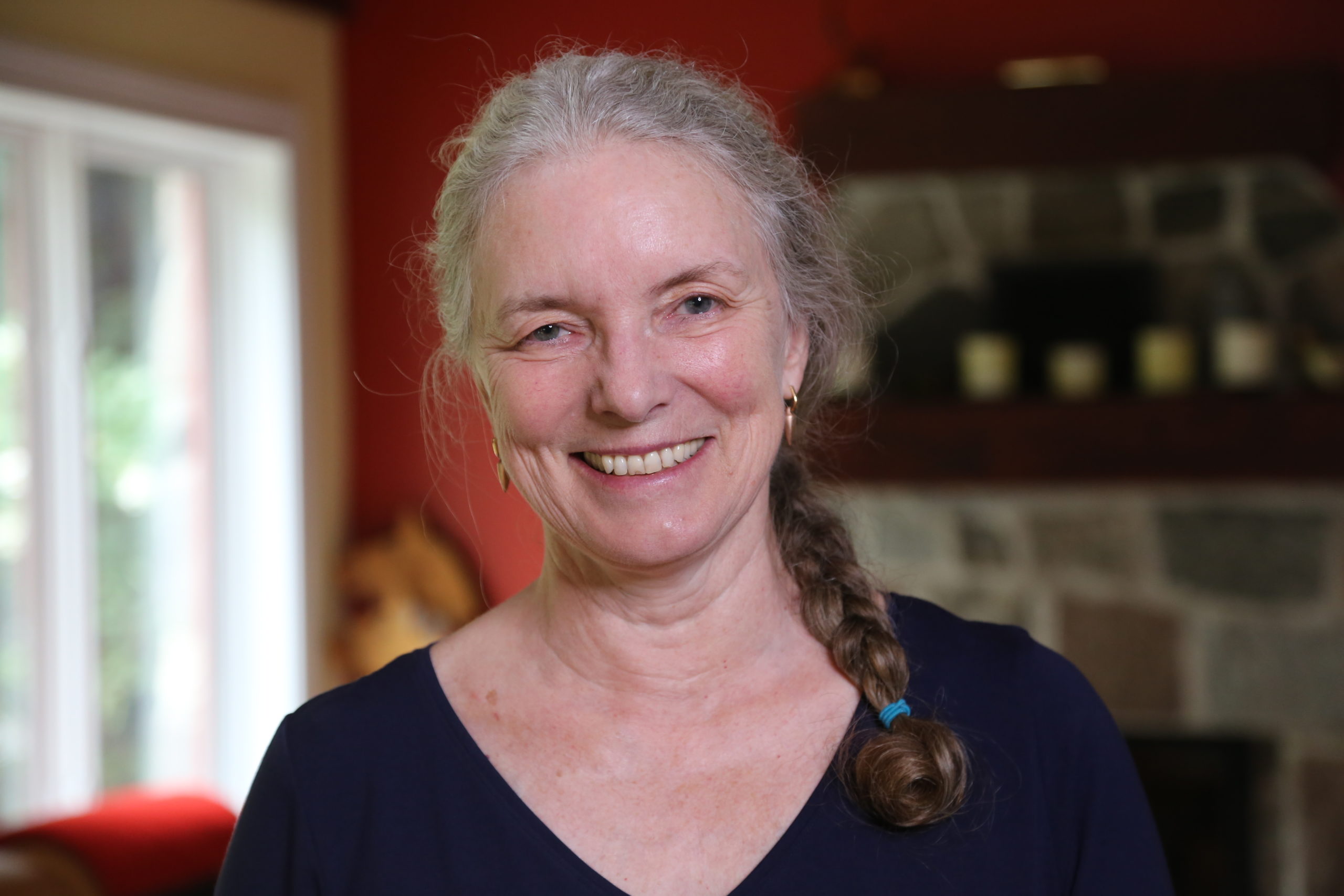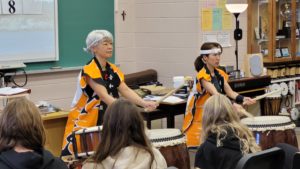Interview: Eleanor Crowder, Actor, Director and Playwright
By Jessica Ruano | January 6, 2022

This interview was originally published on Apt613.ca
Eleanor Crowder is an award-winning actor, playwright, and director. She is a member of several artist collectives, including Bear & Co., Calalou, The Skin Songs Collective, and The AWAY Collective. With MASC, Eleanor works in classrooms to explore text and dramatic creation, online in the delivery of these programs, and with the seniors program, where she and storyteller Katherine Grier have developed two shows, SMILE and GROOVE.

Eleanor Crowder. Photo provide by MASC.
MASC: In the summertime, we can usually find you involved in one of Bear & Co.’s summer Shakespeare productions. How is this summer different and what have you been up to?
Eleanor Crowder: This is the first time in 25 years I have not been under a tree with a script in my hand! Shakespeare and breezes go very well together. It has felt a bit jangly. But I have been kayaking and swimming more days than I would usually. I love summer, which is why outdoor theatre is a defining part of my life. I do miss the camaraderie. We have kept at the text work with the lovely cast of Two Gentlemen of Verona, but Bear & Co.’s next show will be summer 2021.
I have online classes two nights a week, and I have been at my desk much more than I like. But to good effect: I completed a draft of the Away script in mid-June and sent it off for Jane Urquhart’s reaction.
I will be teaching Odyssey Theatre’s Youth Apprentices, a totally online course, in August. That’s a challenge, since commedia dell’arte is such a physical form. I am looking forward to seeing how we can make a series of on-screen boxes hop as a venue for physical comedy.

Eleanor Crowder. Photo provide by MASC.
MASC: As a playwright, director, producer, and actor, a lot of your time is spent in the theatre. With the pandemic necessitating the temporary closure and soon the partial reopening of theatre spaces, how do you think theatre companies – including yours – will adapt?
EC: Oh, this is the big question, isn’t it? We have all been rolling this around the Zoom and phone conversations. What is it that makes theatre so special? The circle of attention from the audience, the almost subliminal sync of performers, the sheer pleasure of being in a circle of story or song around a fire it’s the shared creative collusion that is so powerful. The act of making an imagined world.
Audiences in beleaguered situations actually thrive on that difficulty. No one ever forgets the show we stood in the rain for. The one lit by nightlights on the floor in a prison cell. But the new difficulty is physical distance. In the last decade or so there’s actually a science of proxemics: how tight to pack an audience to build shared laughs, to get the frisson that makes theatre ripple. Audiences actually share breath and muscle rhythm when they really enjoy themselves. What does it mean? We will need to evoke a much more internal response.
Artistically, tiny audiences can be magical. The intimacy of the exchange is very real. But budgets are based on houses of 100, not 50. Bear & Co. has a solo show in the works and a big cast show. We are crunching numbers to see what is possible.
What is it that makes theatre so special? The circle of attention from the audience, the almost subliminal sync of performers, the sheer pleasure of being in a circle of story or song around a fire it’s the shared creative collusion that is so powerful.
As for our Christmas show, we are still very unsure about whether we can even sing at all. There’s talk of Plexiglas booths and shields on hand-held mikes. Will the audience still be invited to carol sing?
As of last week, Phase 3, we can put 50 in a theatre. That’s huge! Being able to open a theatre feels normal. I think I slept deeper that night than I have since March.

Student’s drawing as part of theatre workshop. Photo provide by MASC.
MASC: Your new online program for MASC invites young people to create art inspired by personal experience. When it comes to creativity, why are real-life stories a good place to start?
EC: You are the expert in the details of your own life. Working with young people to express details of everyday builds their confidence in inventing worlds, characters. I use painting and overlaid drawing as a way to build up a bank of detail before we put an experience into words. Each of us walks through life taking in details all the time. The habit of shaping that input (into words, music, gesture) takes some practice. That’s what we do as artists — reinterpret our input streams. So I invite kids to pay close-up attention to their own experience and to enjoy a layered approach to sharing some elements of it.
MASC: As a MASC artist, what do you gain through offering your workshops in schools and in the community?
EC: I find that I am continually learning when I’m teaching. Theatre, writing, drawing, singing, it’s all experimentation. The discovery that drawing is a great way to build ease with words came about in classrooms where many languages were spoken.

Student’s drawing as part of theatre workshop. Photo provide by MASC.
A line drawing allows students to find words slowly. Returning to an image with a shadow colour, a light colour, noting how your perspective shifted each time, we make very practical discoveries as we work. By way of MASC, Centennial School set me on that particular journey. I learned to make discovery more manageable for Grade 3 students who were grappling with two languages. I’ve used drawing and painting in language building ever since.
Right now, the online experience is pushing towards a very detailed exploration of language. This month, we tried out a MASC seniors workshop using a conference call system, Mercurii. The focus was A Day in The Life. We made a series of audio postcards for each other. It was magical. The audio format brought us up close much faster than an in-person workshop might do. We met and talked like old friends. Those postcards are very alive for me: a ski-doo race across the Minnesota border in the dead of winter, swimming with dolphins, deciding to skydive. I have never seen the faces of the participants, but I shared the thrill in their voices.
Latest News
View All Articles



